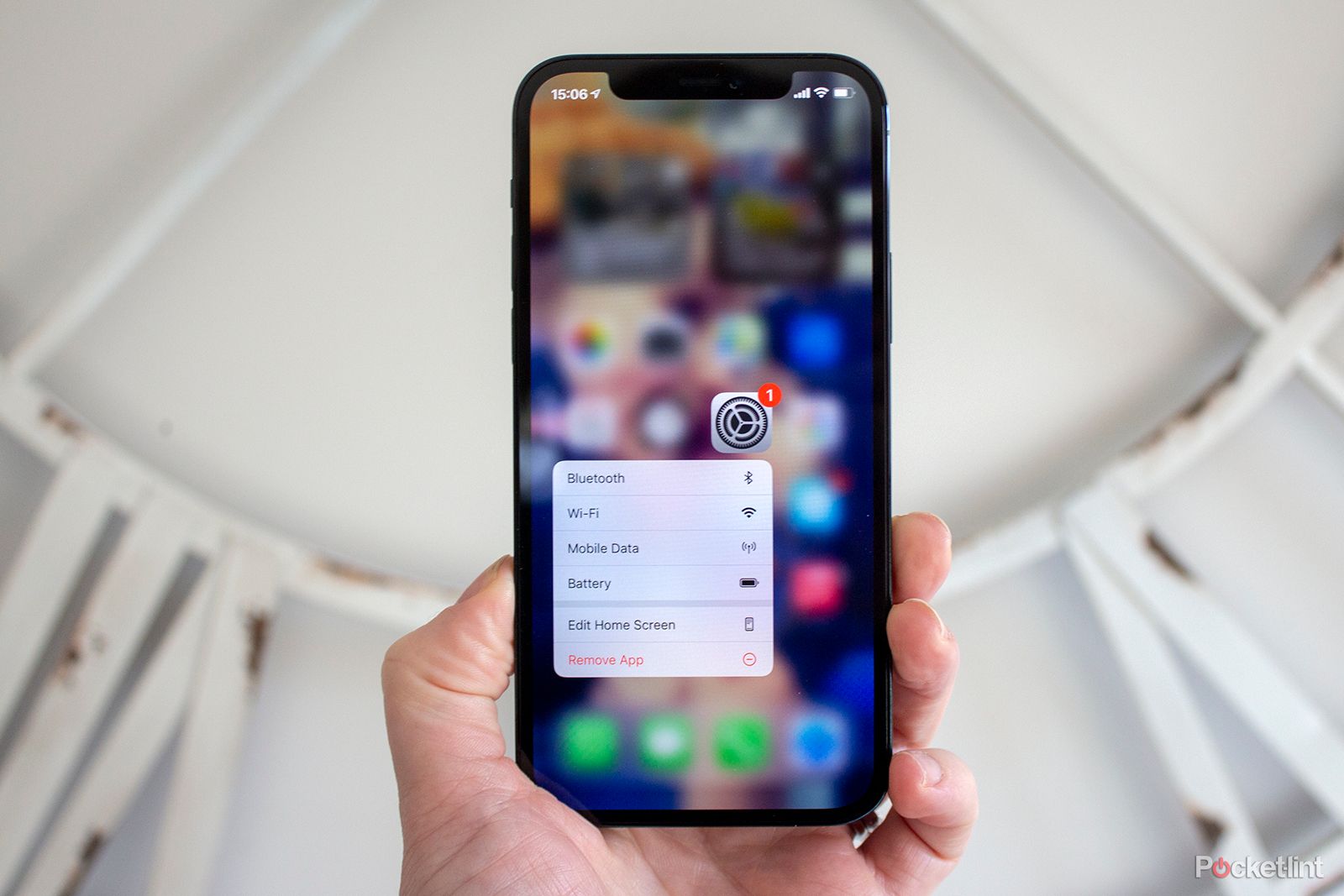What are haptics on iPhone? Haptics on iPhone are tactile feedback vibrations used to enhance user interaction. They provide a sense of touch to digital actions.
Haptics on iPhone have revolutionized the way users interact with their devices. These subtle vibrations give immediate feedback, making actions like typing, swiping, or receiving notifications more intuitive and engaging. Haptic technology helps bridge the gap between the physical and digital worlds, offering a more immersive user experience.
By providing tactile cues, haptics enhance the overall usability and accessibility of iPhones. This feature not only makes the device feel more responsive but also adds a layer of sophistication to user interactions. Whether you’re navigating through apps or receiving alerts, haptics make every interaction feel more natural and satisfying.
What are Haptics on iPhone?

The Sensation Of Touch: Iphone Haptics
The iPhone has revolutionized how we experience touch. The sensation of touch, or haptics, makes our interactions with the device more immersive. But what exactly are haptics on the iPhone?
Haptics Technology Explained
Haptics technology creates tactile sensations through vibrations. The iPhone uses this to simulate real-world touches. This makes the user experience more engaging.
The iPhone’s Taptic Engine is the core of this technology. It produces subtle vibrations that mimic various actions.
| Feature | Description |
|---|---|
| Tap | A short, sharp vibration |
| Long Press | A sustained vibration |
| Swipe | A quick, continuous vibration |
The Role Of Tactile Feedback
Tactile feedback improves the user experience. It makes interactions feel more natural. For example, a subtle tap confirms a key press.
Here are some examples:
- Typing: Each key press feels real.
- Notifications: Alerts feel more noticeable.
- Games: Actions feel more immersive.
These vibrations make the device feel alive. They help users interact without always looking at the screen.
A Brief History Of Haptics In Mobile Devices
Haptic technology has transformed the way we interact with devices. Originally, mobile phones used simple vibrations. Today, advanced haptics offer a more immersive experience. Let’s explore the journey of haptics in mobile devices.
From Vibration To Sophistication
Early mobile phones used basic vibration alerts. These vibrations notified users of calls and messages. As technology evolved, so did haptic feedback. It became more sophisticated and precise.
Smartphones began using haptic feedback for various functions. For example, touchscreens started to provide tactile responses. This improved user interaction and experience.
Modern haptics can simulate different textures. They can also mimic the feeling of pressing a button. This adds a new layer of realism to digital interactions.
Apple’s Pioneering Taptic Engine
Apple introduced the Taptic Engine with the iPhone 6s. This was a game-changer in haptic technology. The Taptic Engine provides precise and customizable feedback.
It enhances user interaction with subtle vibrations. For example, it simulates the sensation of clicking a button. The Taptic Engine also supports 3D Touch. This feature detects pressure sensitivity on the screen.
Apple’s implementation of haptics is both innovative and practical. It elevates the user experience by providing tactile feedback. This makes interactions feel more natural and intuitive.
How Haptics Enhance User Experience
Haptics on the iPhone add a new dimension to user interaction. They provide tactile feedback, making the digital experience more immersive. By feeling the interface, users engage with their devices on a deeper level.
Beyond The Visuals: Feeling The Interface
Haptics go beyond just visuals and sounds. They let you feel the interface. For example, you can feel a subtle vibration when typing on the keyboard. This feedback helps you know that your action has been registered.
Another instance is the gentle buzz when toggling a switch. This tactile response mimics real-life actions, enhancing realism. It makes the digital world feel more tangible.
Interactive Gaming And Haptics
Haptics also play a crucial role in gaming. They add another layer of immersion. Imagine feeling the recoil of a gun or the rumble of a car engine. This makes games more engaging and exciting.
Here’s a quick look at how haptics enhance gaming experiences:
| Game Action | Haptic Feedback |
|---|---|
| Shooting | Recoil sensation |
| Racing | Engine vibrations |
| Adventure | Environmental effects |
Designing With Haptics In Mind
Designing with haptics in mind means creating an experience that feels natural. Haptics on iPhone provides tactile feedback to users. This enhances interactions and makes them more engaging. Let’s explore how to design effectively using haptics.
Human-centered Design Principles
Human-centered design focuses on the user’s needs and experiences. Consider how haptic feedback can improve usability. Think about the context and purpose of each interaction. Use haptics to guide, inform, and delight users.
- Empathy: Understand how users feel during interactions.
- Simplicity: Keep haptic feedback clear and concise.
- Consistency: Ensure haptics are consistent across similar actions.
Creating Intuitive Interactions
Intuitive interactions feel natural and effortless. Haptics can make actions more understandable. For example, a light tap can confirm a button press. A stronger vibration can signal an error.
| Action | Haptic Feedback |
|---|---|
| Button Press | Light tap |
| Error Notification | Strong vibration |
| Success Alert | Subtle pulse |
Use haptics to create a more immersive experience. This makes the interface feel more alive. Small details can greatly enhance the user’s interaction.
Haptic Feedback In Accessibility
Haptic feedback on iPhone enhances accessibility features, especially for users with disabilities. It provides tactile sensations, offering an additional layer of interaction. This is particularly helpful for visually impaired users. Let’s explore how haptics aid accessibility.
Support For Visually Impaired Users
Haptic feedback helps visually impaired users navigate their iPhones more effectively. It provides tactile cues which guide users through various tasks. For example, when a visually impaired user receives a notification, the phone vibrates. This vibration indicates an incoming message or alert.
Additionally, haptics are integrated into the VoiceOver feature. VoiceOver reads text aloud while providing haptic feedback. This combination of audio and tactile cues makes navigation easier. Users can feel the phone vibrate when they select an item. This confirms their choice without needing visual confirmation.
Customizing Haptic Strength And Patterns
Apple allows users to customize haptic feedback to suit their needs. Users can adjust the strength and patterns of the vibrations. This ensures that the feedback is noticeable and effective.
To customize haptics:
- Go to Settings.
- Select Sounds & Haptics.
- Choose Haptic Feedback.
- Adjust the Intensity Slider to your preference.
Users can also choose from different vibration patterns. This allows for more personalized feedback. For example, users can set a unique pattern for messages. This way, they can distinguish between different types of notifications.
| Feedback Type | Customization Options |
|---|---|
| Notification Alerts | Vibration Patterns |
| System Controls | Intensity Levels |
Customizing haptics enhances the iPhone experience for all users. It makes the device more accessible and user-friendly. Thus, haptic feedback is a powerful tool for accessibility.
The Future Of Haptic Technology On Iphone
The future of haptic technology on the iPhone looks bright. Apple is investing heavily in this area. This means more exciting features for users. Let’s explore the upcoming innovations and the role of AI in haptics.
Predictions And Upcoming Innovations
Apple is expected to introduce new haptic features. These features will make interactions smoother and more realistic. Here are some predictions:
- Advanced Feedback: More precise touch responses.
- Customizable Haptics: Users can set their own feedback patterns.
- Health Monitoring: Haptics to track and alert health metrics.
These innovations will enhance user experience. The iPhone will feel more responsive and intuitive.
The Integration Of Ai With Haptics
Artificial Intelligence will play a key role in haptic technology. AI can learn user preferences. This makes the feedback more personalized.
AI-Driven Haptics will adapt to different apps. For instance:
- Gaming: Realistic vibrations for different actions.
- Messaging: Unique feedback for different contacts.
- Navigation: Haptic cues for turns and stops.
AI will make haptics smarter. This means a more immersive and engaging experience for users.
As technology evolves, haptics on the iPhone will become more advanced. Users will enjoy a richer, more tactile experience. Stay tuned for these exciting developments!
Challenges And Considerations In Haptic Design
Designing haptics on the iPhone is a complex task. It requires balancing many factors. Engineers face several challenges to create an optimal user experience. Here, we will explore some of these challenges and considerations.
Battery Life And Resource Constraints
Haptic feedback consumes battery power. Each vibration uses the device’s resources. Engineers must ensure that haptics do not drain the battery quickly. A balance between feedback and battery life is essential.
| Haptic Intensity | Battery Consumption |
|---|---|
| Low | Minimal |
| Medium | Moderate |
| High | High |
Efficient resource management is crucial. Developers need to optimize the code. This ensures that haptics deliver strong feedback without excessive battery usage.
Balancing Feedback Intensity And Comfort
The intensity of haptic feedback must be carefully calibrated. Too strong feedback can be uncomfortable. Too weak feedback may not be noticeable.
Key Considerations:
- User comfort
- Device capabilities
- Feedback consistency
Engineers often use user testing. This helps to determine the right balance. Different users have different sensitivity levels. Customizable settings can help cater to individual preferences.
Example Code for Customizable Settings:
if user_preference == 'high':
set_haptic_intensity(high)
elif user_preference == 'medium':
set_haptic_intensity(medium)
else:
set_haptic_intensity(low)
Balancing these factors ensures a pleasant user experience. The goal is to make haptic feedback both effective and comfortable.

Exploring Haptic Apps And Software
Haptic technology has transformed the way we interact with our iPhones. Haptics provide tactile feedback that enhances user experiences. Haptic apps and software make this possible. Let’s dive into some top apps and how to develop haptic-enabled applications.
Top Apps With Innovative Haptic Features
Several apps use haptics to improve user engagement. Here are some of the best:
- Instagram: Provides subtle vibrations when you like a post.
- WhatsApp: Offers haptic feedback for message notifications.
- Procreate: Uses haptics to simulate brush strokes on the screen.
- Asphalt 9: Delivers vibrations during car crashes and drifts.
- 3D Touch Apps: Many apps use 3D Touch for previewing content.
Developing Haptic-enabled Applications
Creating haptic-enabled apps can enhance user interaction. Here’s a simple guide:
- Open Xcode and start a new project.
- Import the
UIKitframework in your project. - Use the
UIImpactFeedbackGeneratorclass for haptic feedback. - Instantiate the generator using
let generator = UIImpactFeedbackGenerator(style: .medium). - Trigger haptics with
generator.impactOccurred().
Here’s a code snippet:
import UIKit
class ViewController: UIViewController {
let generator = UIImpactFeedbackGenerator(style: .medium)
override func viewDidLoad() {
super.viewDidLoad()
// Trigger haptic feedback
generator.impactOccurred()
}
}
By following these steps, you can add haptic feedback to your app. It makes the user experience richer and more engaging.

Conclusion
Haptics on iPhone add a tactile dimension to user interactions. They enhance feedback, making your device more intuitive. With each tap and swipe, haptics provide a satisfying touch response. Explore and customize these settings to suit your preferences. Enjoy a richer, more engaging iPhone experience with haptics.



